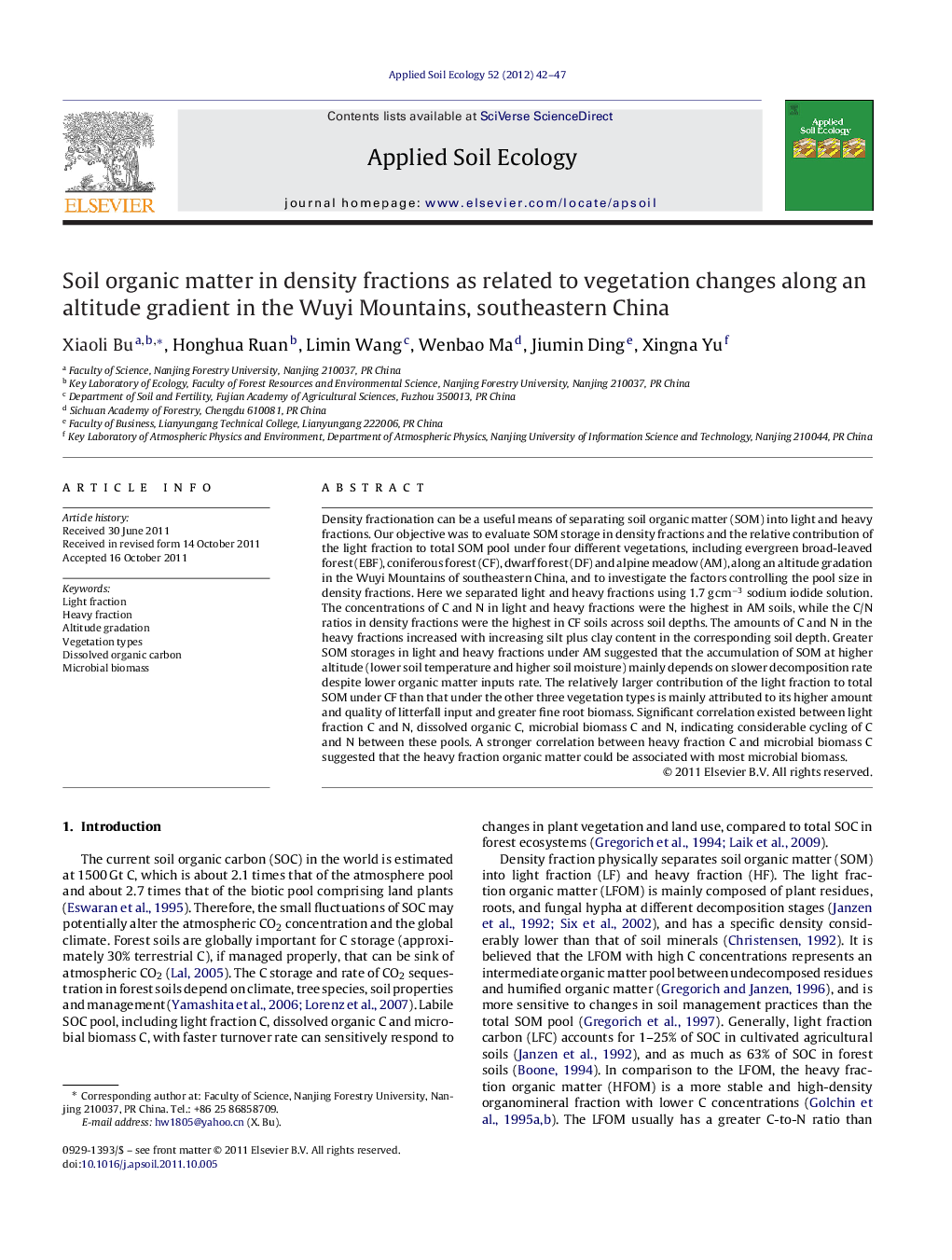| Article ID | Journal | Published Year | Pages | File Type |
|---|---|---|---|---|
| 4382632 | Applied Soil Ecology | 2012 | 6 Pages |
Density fractionation can be a useful means of separating soil organic matter (SOM) into light and heavy fractions. Our objective was to evaluate SOM storage in density fractions and the relative contribution of the light fraction to total SOM pool under four different vegetations, including evergreen broad-leaved forest (EBF), coniferous forest (CF), dwarf forest (DF) and alpine meadow (AM), along an altitude gradation in the Wuyi Mountains of southeastern China, and to investigate the factors controlling the pool size in density fractions. Here we separated light and heavy fractions using 1.7 g cm−3 sodium iodide solution. The concentrations of C and N in light and heavy fractions were the highest in AM soils, while the C/N ratios in density fractions were the highest in CF soils across soil depths. The amounts of C and N in the heavy fractions increased with increasing silt plus clay content in the corresponding soil depth. Greater SOM storages in light and heavy fractions under AM suggested that the accumulation of SOM at higher altitude (lower soil temperature and higher soil moisture) mainly depends on slower decomposition rate despite lower organic matter inputs rate. The relatively larger contribution of the light fraction to total SOM under CF than that under the other three vegetation types is mainly attributed to its higher amount and quality of litterfall input and greater fine root biomass. Significant correlation existed between light fraction C and N, dissolved organic C, microbial biomass C and N, indicating considerable cycling of C and N between these pools. A stronger correlation between heavy fraction C and microbial biomass C suggested that the heavy fraction organic matter could be associated with most microbial biomass.
► Greater SOM storage at higher altitude depends on slower decomposition rate. ► The amounts of litter and fine root influence the proportion of light fraction OM. ► Significant correlation exists between LFC, LFN, DOC, MBC and MBN.
